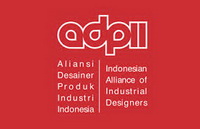Perancangan kursi duduk-berdiri berdasarkan pendekatan antropometri di PT. Otscon Safety Indonesia
Abstract
Keywords
Full Text:
PDFReferences
Abdullah, S. & Sutanto, T. E. (2015). Statistika Tanpa Stress. Jakarta: TransMedia Pustaka.
Anggrianti, S. M., Kurniawan, B., & Widjasena, B. (2017). Hubungan antara postur kerja berdiri dengan keluhan nyeri kaki pada pekerja aktivitas mekanik section welding di PT. X. Jurnal Kesehatan Masyarakat (Undip), 5(5), 369-377.
Edwin, Y. (2017). Masalah saat harus berdiri lama dan cara mengatasinya. Retrieved 10 September 2020 from https://beritatagar.id/artikel/gaya-hidup/masalah-saat-harus berdiri-lama-dan-cara mengatasinya.
Iridiastadi, H. & Yassierli. (2014). Ergonomi Suatu Pengantar. Edisi Pertama. Bandung: PT. Remaja Rosdakarya.
Kuswana, W, S. (2015). Antropometri Terapan untuk Perancangan Sistem Kerja. Edisi Pertama. Bandung: PT.Remaja Rosdakarya.
Liliana, Y. P., Widagdo, S., & Abtokhi, A. (2007, November). Pertimbangan Antropometri pada Pendisainan. In Seminar Nasional III SDM Teknologi Nuklir: Yogyakarta.
Prasetyo, E., & Agri Suwandi. (2011). Rancangan Kursi Operator SPBU Yang Ergonomis Dengan Menggunakan Pendekatan Antropometri. In Prosiding Seminar Nasional dan Workshop Pemodelan dan Perancangan Sistem 2011 ISBN 978-602-19492-0-7.
Purnomo, H. (2013). Antropometri dan Aplikasinya. Edisi Pertama.Yogyakarta:Graha Ilmu.
Roscoe. (1982). Research Methods for Business. New York: Mc Graw Hill.
Sudaryono. (2018). Metodologi Penelitian. Edisi Pertama. Depok: PT. Raja Grafindo Persada.
Sugiyono. (2007). Statistika Untuk Penelitian. Bandung: CV. Alfabeta
Sutalaksana, I. Z., Anggawisastra, R., R., Tjakraatmadja, J.H. (1979). Teknik Tata Cara Kerja. Bandung: ITB.
Sutalaksana, I. Z. (2006). Teknik Perancangan Sistem Kerja. Bandung: ITB.
Wignjosoebroto, S. (2008). Ergonomi, Studi Gerak dan Waktu. Edisi Pertama.Surabaya: Prima Printing.
Yanto & Ngaliman, B. (2017). Ergonomi Dasar-Dasar Studi Waktu dan Gerakan untuk Analisis dan Perbaikan Sistem Kerja. Edisi Pertama. Yogyakarta: CV Andi Offset.
DOI: https://doi.org/10.24821/productum.v4i2.4613
Refbacks
- There are currently no refbacks.
p-ISSN 2477-7900 | e-ISSN 2579-7328

This work is licensed under a Creative Commons Attribution 4.0 International License.
Like & Follow Us











